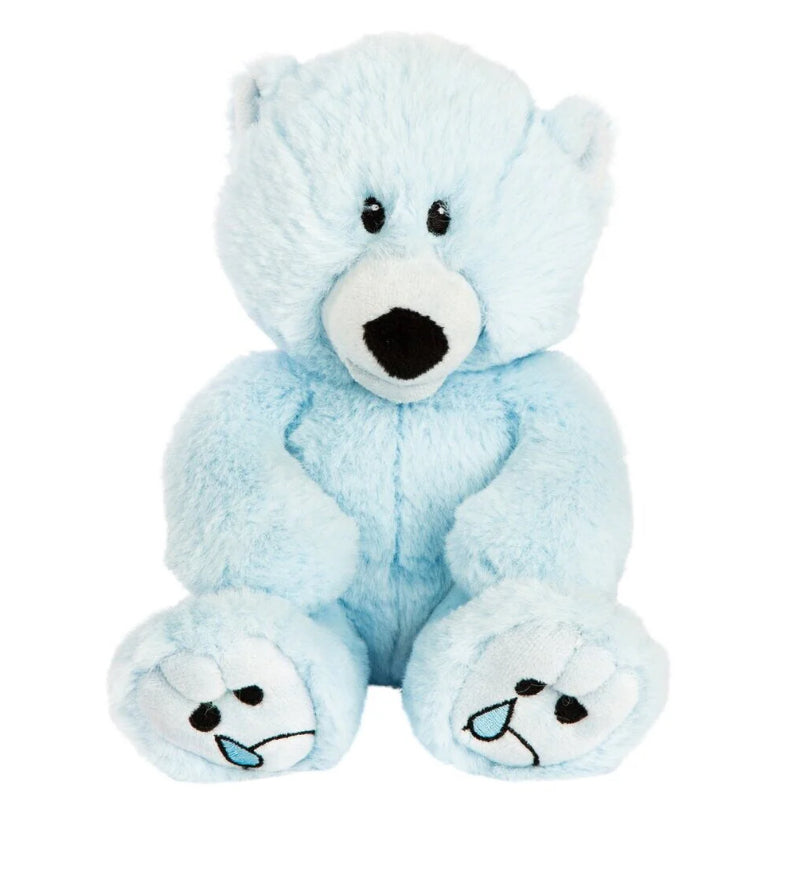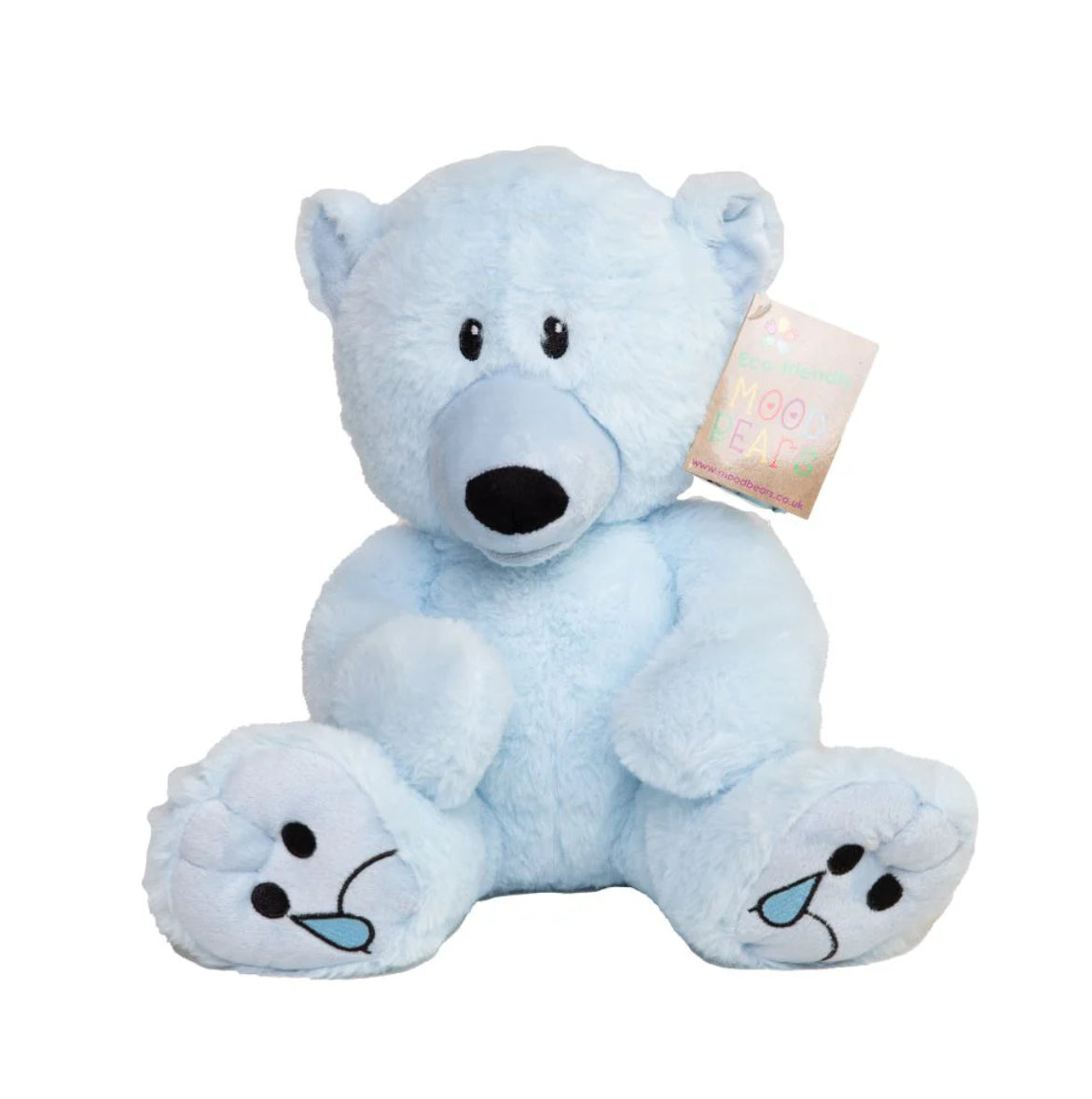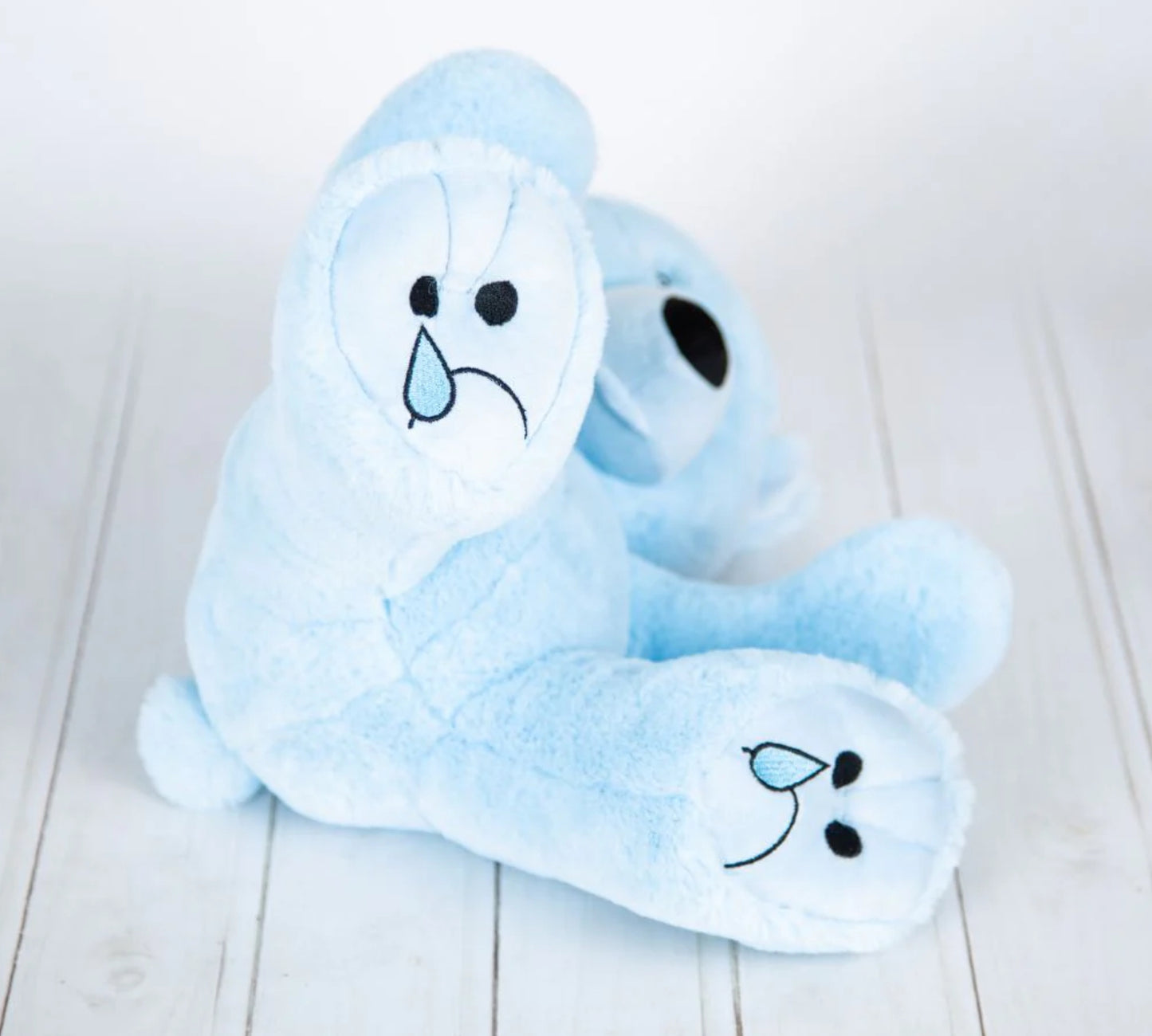Finley & Fox
Mood Bear - Sad Bear
Mood Bear - Sad Bear
Couldn't load pickup availability
Sad Bear looks sad and gloomy, but makes the best of friends.
No matter how you are feeling, Sad Bear’s with you as day ends.
Sad Bear will calm your nerves, and sooth away your fears.
Snuggle you when feeling sad, And wipe away your tears.
Sad Bear to you and I, The bear that’s always blue.
Sad Bear brings you happiness and is always there for you.
Mood Bears is a registered trademark. All Bears are safety tested and suitable for all ages from 3 years of age. The item complies to all European and British Toy Safety Standards EN71 Parts 1, 2 and 3, ASTM F963 and ISO 8124 and CCPSA toy. Made from Recycled Materials & 100% Recyclable.
So how can Sad Bear help?
Sad Bear can be an effective tool for teaching children about positive mental health by addressing multiple aspects.
Sad Bear can be used in role-playing scenarios where children are encouraged to identify and solve problems. For instance, a child might be asked to help Sad Bear find a way to cheer up when he's feeling sad. This can involve brainstorming different activities or solutions that could make Sad Bear feel better, such as reading a book, playing a game, or talking about feelings. Through these exercises, children learn to think critically and develop creative problem-solving skills.
Children can observe and assist Sad Bear in overcoming challenges. For example, Sad Bear might face a difficult task, like building a block tower or learning a new game, and with the child's help, they can practice not giving up even when the task is tough. By guiding Sad Bear through these challenges, children can see the importance of sticking with something until it's completed, reinforcing the value of determination and effort.
Additionally, parents and educators can create a narrative around Sad Bear that includes small rewards and celebrations for each milestone achieved. This can help children understand that progress is made step by step and that every small victory is worth acknowledging. Encouraging children to reflect on how Sad Bear feels after overcoming a challenge can also nurture empathy and emotional intelligence.
Through these shared experiences, children not only learn perseverance but also develop a sense of compassion and support for others facing their own obstacles.
Sad Bear has the opportunity to introduce mindfulness exercises, such as focusing on the present moment's sensations or practicing gratitude by recalling things that bring joy. These activities can assist children in becoming more aware of their emotions and responses.
Utilising storytelling can also be impactful. Sad Bear could recount personal tales of overcoming sadness or frustration, offering children relatable examples of coping strategies and resilience.
Encouraging open communication is key. By sharing his feelings, Sad Bear demonstrates to children that it's acceptable to express emotions and seek help when needed. This approach can create a supportive environment where children feel heard and acknowledged.
Incorporating Sad Bear into daily routines can reinforce these lessons. For example, having a designated "Sad Bear Time" where children and their caregivers practice these techniques together can make self-regulation a regular part of their lives. This consistent practice helps children internalize the strategies and apply them independently over time.
Overall, Sad Bear serves as a gentle, supportive figure that guides children toward emotional well-being and resilience, helping them navigate the complexities of their feelings with confidence and grace.
Engaging with Sad Bear can boost a child's communication abilities. Through discussing Sad Bear's emotions and behaviors, kids can practice expressing their thoughts and feelings, asking questions, and listening to answers. This interactive exchange aids in enhancing their communication skills, leading to improved interpersonal abilities.
In essence, Sad Bear acts as both a source of comfort and a beneficial learning aid, supporting children in cultivating crucial mental health and social skills in an encouraging and interactive manner.
Example lesson plan:
Subject: PSHE Duration: 60 minutes Objective: Students will understand and articulate their emotions, practice relaxation techniques, and develop conflict resolution skills using Mood Bears.
Materials Needed: Mood Bears (8 different bears representing different emotions)
Circle time mat
Calm music for relaxation
Conflict resolution cards/questions
Whiteboard and markers
Lesson Outline:
1. Introduction and Circle Time (15 minutes)
Objective: Facilitate a discussion about emotions using Mood Bears.Greeting and Warm-Up: Welcome students and have them sit in a circle. Briefly introduce the Mood Bears and explain how each bear represents a different emotion (e.g., Happy Bear, Sad Bear, Angry Bear, etc.).
Discussion: Pass around each bear and ask students to share a time when they felt the emotion represented by the bear. Encourage them to use phrases like “I felt
____ when ____.”
Engagement: Highlight the importance of recognising and talking about emotions.
2. Guided Relaxation Exercise (15 minutes)
Objective: Help children unwind and destress using the Mood Bears.
Preparation: Dim the lights and play calming music. Have each student pick a Mood Bear they feel connected to at the moment.
Relaxation Technique: Lead the students through a guided relaxation exercise. Instruct them to cuddle their Mood Bear, close their eyes, and take deep breaths. Guide them through relaxing each body part from head to toe.
Reflection: After the exercise, ask students how they feel and if the Mood Bear helped them relax. Discuss the importance of taking time to relax and de-stress.
3. Conflict Resolution Activity (20 minutes)
Objective: Teach children to communicate their feelings and find peaceful solutions to conflicts using Mood Bears.
Scenario Introduction: Present a simple conflict scenario relevant to their age group(e.g., “Two students want to play with thesame toy.”). Role-Playing: In pairs, have students use the Mood Bears to express their feelings about the conflict. For example, one student holds the Angry Bear to show they are upset, while the other holds the Nervous Bear.
Guidance: Facilitate the role-play,encouraging students to listen to each other and find a compromise or solution. Provide conflict resolution cards/questions to guide their discussion if needed.
4. Conclusion and Reflection (10 minutes)
Objective: Reinforce the day's learning and encourage ongoing use of Mood Bears.
Discussion: Ask students to share one thing they learned about emotions, relaxation, or conflict resolution.
Feedback: Allow students to give feedback on the activities and how they felt using the Mood Bears.
Encouragement: Encourage students to use the Mood Bears throughoutthe school day whenever they need support with their emotions.
Homework/Extension Activity: Ask students to draw a picture of their favorite Mood Bear and write a short story about a time when the bear helped them with their emotions.
Assessment: Observe student participation and engagement during activities. Review student reflections and stories to assess their understanding and application of emotional intelligence concepts.
Share







